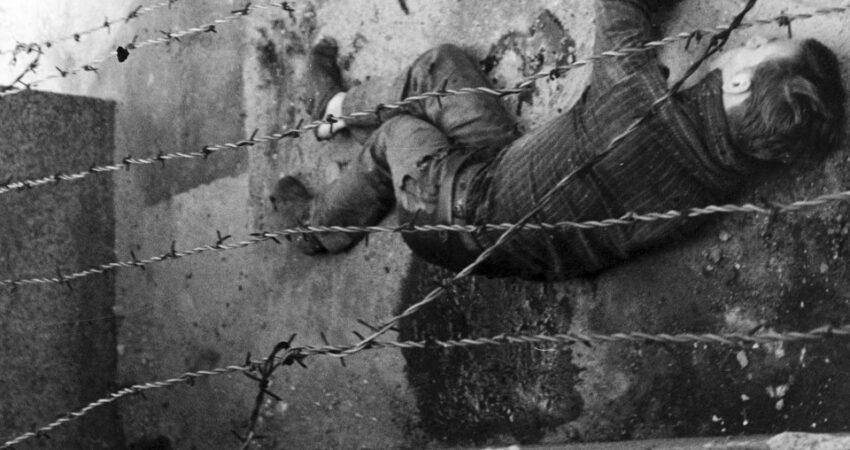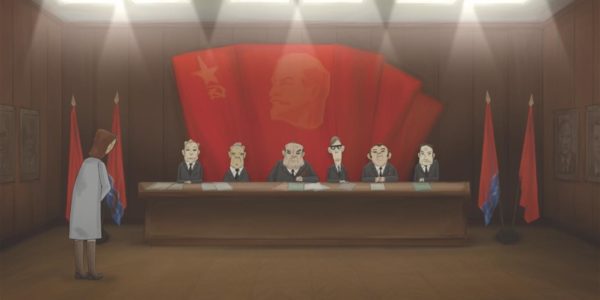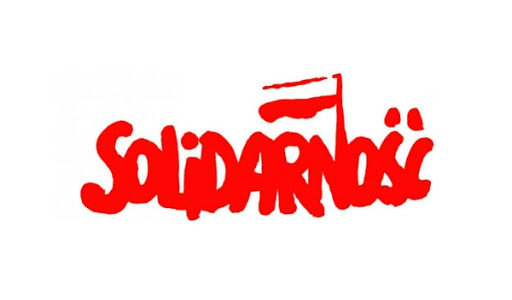August 17, 1962: Peter Fechter killed by GDR border troops
By Patrick van Schie
Peter Fechter bleeds to death on the wrong side of the Wall
The young East Berlin construction worker Peter Fechter became world famous because of his flight to freedom. More than a year after the construction of border barriers – at that time often mainly rolls of barbed wire – through communist East Germany on the border between East and West Berlin, Fechter attempted an escape to the free western part of the city. In the meantime, the barbed wire coils had been replaced by a first Wall, not yet as high as those of the 1970s and 1980s.
Together with his friend Helmut Kulbeik, Peter Fechter ran to the Wall at a weak spot in the border strip. Kulbeik managed to climb over the Wall, but Fechter was hit in the upper body by two volleys of fire during his attempt. He fell back, on the East Berlin side. Lying close to the Wall, his cry for help was ignored, deliberately by the East German border guards and out of helplessness by West German police officers on the other side of the Wall. After more than an hour the now bled to death Fechter was carried away by East German border guards. Fechter was not the first to be shot while trying to escape over the Wall. But his attempt to escape and the carrying of his body were photographed by Western media and made the cover of the popular American magazine Life. His death thus became symbolic of the brutality of a regime that would rather shoot and perish its own citizens than allow these citizens to reach the free world. Fechter’s failed flight, his tragic death and the removal of his body were also filmed, as it turned out when the Stasi archives opened after the fall of the Wall. Today there is a memorial to Peter Fechter in Berlin, which bears the words “er wollte nur die Freiheit” [he only desired freedom]
The construction of the Wall was supposed to stop a massive outflow from the GDR
In the period between 1949 – the division of Germany – and August 13, 1961 – the construction of the Berlin Wall – approximately 2.7 million East Germans had fled their (new) country to the West. From 1952, when border barriers were erected between the communist GDR and the (free) Federal Republic of Germany, they could still do this via Berlin, where the four great victorious powers from the Second World War formally exercised power together. The border between the eastern part of the city occupied by Soviet troops and the free western part was not yet closed. Every day tens of thousands of Berliners crossed this border because they worked in one part of the city and lived in the other. But every year more than a hundred thousand inhabitants of the German “workers’ paradise” also sought Western freedom via Berlin; in the peak year of 1953 (the year of a workers’ uprising against the communist regime in the GDR) there were even 331,000.
In the year 1961 alone, up to and including August 12, about 207,000 East Germans chose through Berlin the freedom of the West over the communist dictatorship. On the night of 12-13 August, the East German regime put an end to this with the express consent of the Soviet Union. At the beginning of that summer, the communist party leader in the GDR, Walter Ulbricht, had received permission from the Kremlin to close the ‘gap’ that formed the border between East and West Berlin. As late as 15 June, Ulbricht had lied: “Nobody hat die Absicht eine Mauer zu errichten” [Nobody intends to erect a wall], while he himself had been urging the leaders of the Soviet Union for some time for permission to do just that.
Although the East German regime immediately built a border barrier that was as impenetrable as possible – an operation tightly led by Erich Honecker, who later succeeded Ulbricht as party chief in the GDR – in many places it was still relatively makeshift in the beginning. As a result, more than 14,000 escape attempts were successful in the remaining months of 1961 and 1962. As the Wall became stronger and higher and the strip in front of it was equipped with more mines and automatic firing systems, the number of successful attempts dropped sharply. By the 1980s, this number had fallen to between 160 and 300 per year (with the exception of 1988, when 590 people managed to flee).
Victims at the Berlin Wall
As mentioned, Peter Fechter was not the first to die in an attempt to escape over the Wall. The first to die in such an attempt was the elderly Ida Siekmann, who fell from a third-floor window of a house on Bernauer Straβe on August 22. The house was right on the border just in the east zone; the street formed the free West. But Siekmann did not survive the fall. Three days earlier, young Rudolf Urban had been seriously injured when he climbed out of a window on the same street but tore the knotted sheets. He would die a few weeks later – on September 17 – in a hospital. The first refugee to be shot dead by East German border guards was 24-year-old tailor Günther Litfin, who hoped to swim across the Humboldthafen (at that time unblocked) but was killed 10 meters from the quay on the western side. Shot dead.
In total, from August 1961 until the fall of the Wall on November 9, 1989, between 161 and 372 people (depending on who is counted) were killed, shot or killed in an attempt to escape over the Berlin Wall. The last deceased victim also falls into this last category, 32-year-old Winfried Freudenberg who managed to fly over the Wall on March 8, 1989 with a balloon he manufactured himself, but still died when his balloon subsequently crashed. A month earlier, 20-year-old Chris Gueffroy had been shot dead by the East German Border Police. He was the last one.
These are by no means all East Germans who died during escape attempts: 174 people drowned when crossing the Baltic Sea alone. Of the approximately 5,500 people who sought freedom along this road, only 15% managed to achieve it. In most cases where it failed, the refugee was arrested and imprisoned for years.
That has also happened to at least 71,000 East Germans who tried to escape over the Berlin Wall. So many convictions for ‘Republikflucht’ have been officially handed down. Those who tried to flee the communist ‘workers’ paradise’ of East Germany were labeled ‘Staatsfeind’ or ‘Staatsverbrecher’. A long prison sentence as a political prisoner under a strict regime was their fate; those who were “lucky” were exchanged for an East German spy caught in the West.
The Berlin Wall and the border barriers between the GDR and West Germany naturally turned the communist part of Germany into one big prison. In that sense, anyone who did not cooperate with the regime was a victim. The refugees whose attempts failed were of course victims in a double sense.
In addition, their family members also faced sanctions. For example, a professional ban was imposed on the sisters of Peter Fechter. In communist countries not only possessions were – and are – collectivized, but also punitive measures (against expressions of resistance against the regime).
Interesting links:
https://www.youtube.com/watch?v=a_vRABocl4M
Image: Polizeihistorische Sammlung/Der Polizeipräsident in Berlin https://www.chronik-der-mauer.de/en/chronicle/_year1962/_month8/?month=8&year=1962&opennid=176997&moc=1




Follow Us!